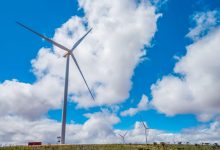A new study has determined that South Australia’s abundant and low cost wind and solar resources leave it well placed to grab a significant share of the green hydrogen market that will funnel through the Port of Rotterdam, the biggest sea port in Europe.
The study done with the Port of Rotterdam Authority concludes that – despite its distance – South Australia is expected to be cost competitive supplier to the Dutch port’s massive green hydrogen plans, and could meet up to 10% of its renewable hydrogen demand of 1.8 million tonnes a year in 2050.
South Australia is supporting four different green hydrogen already under development, and there are another seven shortlisted for land at Port Bonython. The study predicts that South Australia could become a significant renewable hydrogen producer and exporter as early as 2025-2026.
“We have been working with the Port of Rotterdam on a pre-feasibility study which shows our state could supply a significant share of hydrogen that Rotterdam expects to import by 2050,” said Dan van Holst Pellekaan, South Australia’s minister for energy and mining.
“A huge new global market is developing as much of the world shifts towards renewable energy for power and to reduce carbon emissions by 2050, and South Australia is leading the way using its abundance of wind and solar to produce and export low-cost energy, including clean, green hydrogen exports.”
South Australia has a target of reaching “net 100 per cent renewables” for its domestic electricity supply in coming years, and has a long term goal of reaching 500 per cent renewables through the supply of green hydrogen and green ammonia to domestic and international customers.
The Port of Rotterdam has already lined up a number of green hydrogen-based projects to be built in and around the port. A 2GW offshore wind farm will be built offshore and linked to a 2GW hydrogen conversion park which will include operators such as Shell and H2-Fifty.
Import terminals are also being planned as well as blue hydrogen production – hydrogen produced from natural gas and refinery gas – and hydrogen production from biomass.
Further, a consortium is under development with the aim of operating 500 trucks on hydrogen, and plans are also in the works to investigate using hydrogen for heating greenhouses and buildings through a national hydrogen grid.
The study also concluded that careful consideration needs to be given to a masterplan for the development of a port and industrial complex including export infrastructure at Port Bonython.
South Australia is not the only potential Australian state with views of exporting hydrogen to the Port of Rotterdam. Western Australia’s McGowan government signed a memorandum of understanding with the Port of Rotterdam late last month with a similar view to building a renewable hydrogen export supply chain.










